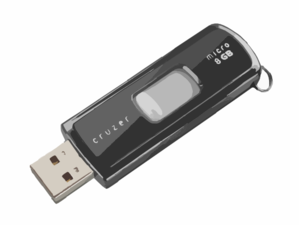
How to create USB Multiboot thumb drive with MBR
The typical USB boot drive uses the legacy MBR to boot, which is fine for most utility and Windows installation images up to Windows 7. There are several free applications that can be used to create USB multiboot thumb drive with various strengths and weaknesses, but the most versatile without sacrificing ease of use might be Easy2Boot. If all that is needed is MBR booting from ISO images, then it often is as simple as adding the appropriate ISO image to the correct directory. In addition, using Easy2Boot makes it easier to transition into more sophisticated boots, including UEFI.
This is an introduction to creating the USB stick for purposes of booting into various ISO files, to include Windows 7 installation ISOs. It does not cover ongoing maintenance and updates of the stick once created. Once this process is grasped, more advanced topics are much easier to understand.
In general, the steps to create the E2B boot disk can be summarized as:
- Download and extract the latest Easy2Boot files.
- Organize the ISO files to put on the stick.
- Combine the directories into a third one that will be the final layout of the stick.
- Run the MAKE_E2B_USB_DRIVE (run as admin).cmd command.
- Test the stick.
There are other methods for creating and maintaining the boot stick, but this is the easiest for creating and updating E2B sticks. Creating a third directory segregates files and makes updates easier.
Download Latest Easy2Boot
Download the latest Easy2Boot from the Easy2Boot downloads page.
Create a directory that will hold the extracted files. In order to ease future maintenance, putting the version number in the directory name is a good idea. For example, if the latest version is 1.74, then create a directory named “e2b174”. The following directions will assume that is the name, so substitute accordingly.
Extract the downloaded zip files into the e2b174 directory.
Organize ISO Files
In the extracted directory, copy (don’t move) the _ISO directory up one level (the same as the e2b174 directory). Next, navigate into the _ISO directory and remove any unneeded files and directories. Remove all files even in the directories you care about and put the ISO files into them. You will probably want the following at least:
MAINMENU contains any ISOs you want to appear at the top level of the menu once you boot. A good candidate for this is the Ultimate Boot CD (UBCD) multipurpose utility CD/ISO.
- ANTIVIRUS contains rescue CDs, such as come from Avira or AVG.
- UTILITIES contains miscellaneous utilities such as Clonezilla.
- WINDOWS (not to be confused with WIN) contains Windows installation ISOs (only!). There are subdirectories for each version (ex: WIN7, WIN8), so remove the files and directories not directly associated with the particular versions you care about.
Combine Files for Stick
In Windows Explorer, right-click on the directory e2b174 and choose “Copy”. Find a blank spot, right-click and choose “Paste”. It will create a copy of the e2b174 directory called “e2b174 (Copy)”. After it is finished copying, right-click on the copy directory, choose “Rename” and rename it to simply “e2b”.
Right-click on the _ISO directory and choose “Copy”. Right-click on the e2b folder and choose “Paste”. This will copy all of the contents of the _ISO folder underneath the e2b folder. Prompt to merge contents as needed. If you have properly followed the directions thus far, there should be no need to overwrite any files.
You will now have a folder e2b174 directory containing only the files downloaded from Easy2Boot, an _ISO directory containing only the files you downloaded that you wish to boot from (but in their respective subdirectories), and an e2b folder that contains the combined contents of both.
This gives you the option of easily upgrading Easy2Boot on the next stick you create by blowing away the e2b folder and following the same procedure as above. It also allows you to upgrade an existing stick simply by extracting the files from a fresh Easy2Boot download and running the appropriate command.
Create USB Multiboot Thumb Drive
Insert a USB stick that will contain the contents of the folder you just created. Keep in mind that all files on it will be erased.
In the e2b directory, find MAKE_E2B_USB_DRIVE (run as admin).cmd, right-click on it and choose “Run as administrator”. Follow the prompts.
You have just created a boot stick! Now to test it.
Test Stick
Open Windows Explorer and navigate to the thumb drive.
Find QEMU_MENU_TEST (run as admin).cmd, right-click on it and choose “Run as administrator”. It should boot up to a menu. You may not be able to do much else in the virtual box presented, but at least you can be reasonably assured the stick works. Choose “Power off” to exit the QEMU program.
Find a test machine and run the stick through its paces. If something was placed in the wrong directory, it can be moved in the _ISO directory and the steps redone accordingly.
There are many options and other methods that this document has cut through. Now that you have learned the basics, the documentation on the Easy2Boot site can help immensely in working out other situations and ways of doing the same thing.